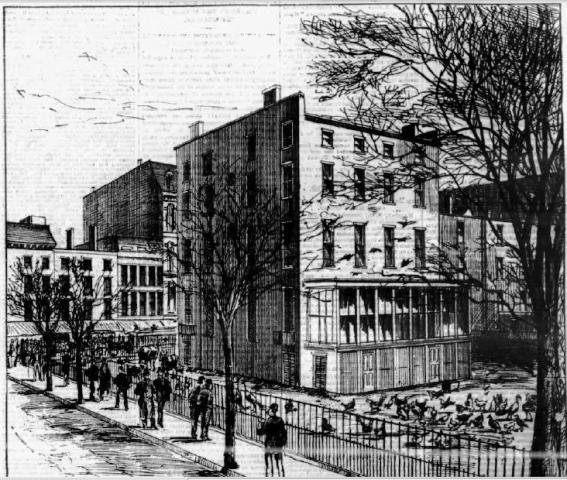
This is a tale about Peter Goelet, the last of the great millionaires of Old New York. Goelet was a man who not only outlived William B. Astor, A.T. Stuart, and Cornelius “Commodore” Vanderbilt, but who was once the wealthiest bachelor in New York State. He also had the most expensive pasture in the world and the last cow to ever graze on Broadway (north of Union Square).
When he died in November 1879, the New York press called Peter Goelet an eccentric millionaire and a miser who hoarded his fortune and substituted his farm animals and birds for a wife and children. But to his family and neighbors, he was Uncle Peter, a kind old man who milked his cow, collected eggs from his hens, mended his own clothes, tinkered in his basement metal shop, and refused to give up the simple farming life as the city built up all around him.
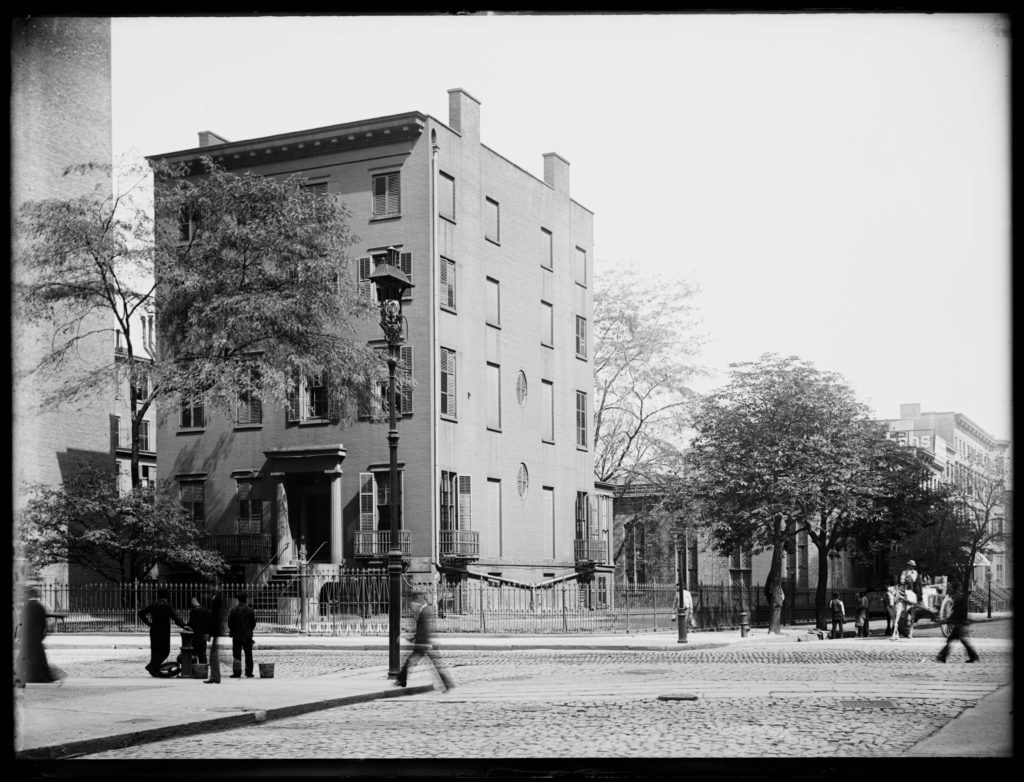
The Goelet Dynasty
Our story begins around 1676, when Francois Goelette, a Huguenot refugee, arrived in New Amsterdam with his 10-year-old son, Jacobus. Shortly after their arrival, Francois was reportedly lost at sea while returning to Holland. Jacobus was raised by Frederick Philipse, the Lord of Philipse Manor (today’s Westchester County), but retained the anglicized surname. Jacobus Goelet’s grandson Peter, one of 13 siblings, was born in 1727.

Peter Goelet was an ironmonger who used his profits from the Revolutionary War to buy real estate in Manhattan. As did the Astors, the Rhinelanders, and the Lorillards, Peter obtained much of his holdings through water grants (land under shallow water), which he purchased from corrupt city administrators.
Peter also ran a successful hardware business with Peter T. Curtenius in a little wooden building under the sign of the Golden Key at 48 Hanover Square. After their partnership dissolved, Peter moved his operations to his large residence at 113-115 Pearl Street, where he sold hardware, brushes, musical instruments, and cutlery.
On April 27, 1755, Peter married Elizabeth Ratsey, the daughter of another prominent New York merchant. Their son Peter P. (Peter #2) followed in his father’s footsteps as a merchant, selling fancy hats and bonnets at his shop at 63 Water Street.
In 1799, Peter #2 married Almy Buchanan, the daughter of Thomas Buchanan, a wealthy Scotch farmer who cultivated turnips, corn, and potatoes on 13 acres of land surrounding 45th Street and Third Avenue in what was then Manhattan’s northern wilderness. It was from this property that the Goelet family obtained much of its wealth.
Peter and Almy Goulet’s son Peter (Peter #3) arrived in January 1800.
The Tiebout Farm and Mansion
Before I tell you about Peter and his golden Jersey cow, I need to mention Cornelius Tiebout, a Dutch farmer and merchant who owned about 33 acres of land just south of the Gramercy Farm.
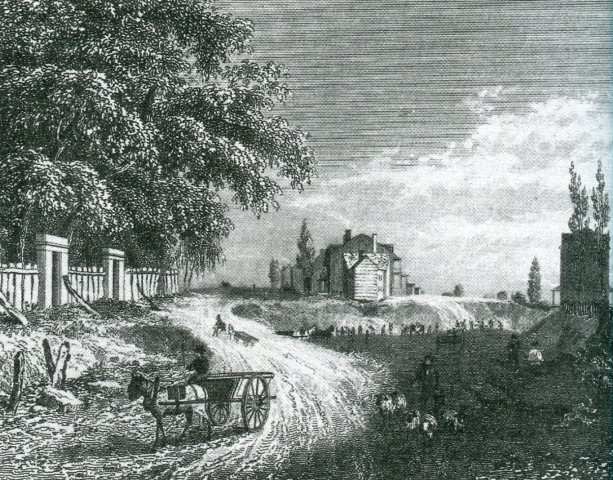
When Cornelius Tiebout died in 1785, this property passed to his widow, Mary Magdalene Tiebout. Mary got busy right away and married Edward Williams that same year. Their son, Cornelius Tiebout Williams, eventually inherited the property.
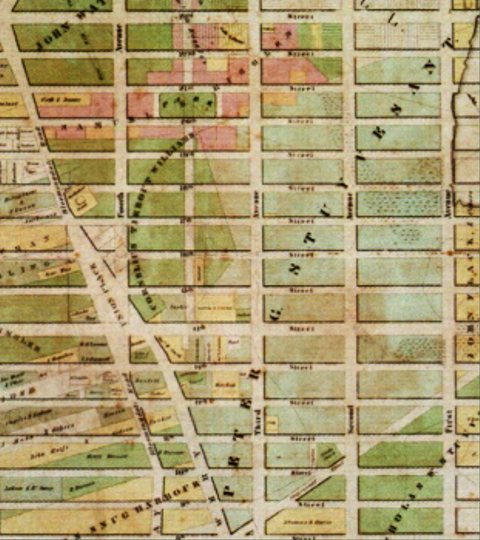
In 1830, Cornelius Williams built a large, four-story Greek Revival mansion with a carriage house and stables on the northwest tip of his property, about three blocks north of Union Place (today’s Union Square). When he died five years later, all his heirs drew lots out of a hat. A daughter, Mrs. Julia C. Miner, drew the 96 x 168 foot lot with the mansion on 19th and Broadway. Peter Goelet paid $22,500 for the property on January 1, 1844.
The Goulet Mansion
The home at #890 Broadway was considered extremely elegant in its day. It had a peak copper roof – which Peter replaced with a flat roof — cast iron balconies along the parlor-floor windows, and a large glass-enclosed conservatory that extended into the back gardens.
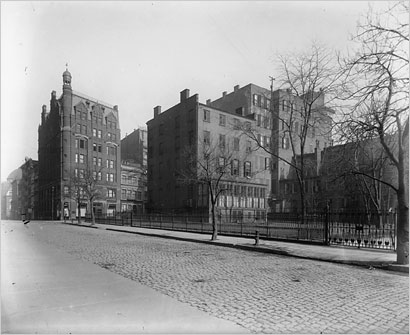
The mansion was surrounded by a grassy yard and gardens, which were under the care of Thomas Crimmins, Peter’s gardener. Peter filled the yards with exotic birds from around the world — Pheasants from India, storks from Egypt, birds of paradise, cranes, and other brilliantly plumed fowl with clipped wings would feed from his hand as New Yorkers and tourists alike gazed in astonishment through the iron fence. (It was a standing joke to tell passengers on the stages that the yard was an annex to the Central Park menagerie.) In winter, the cow and the birds would take shelter in the stone Gothic Revival carriage house.
One New Yorker who loved to watch Peter’s exotic birds was Theodore Roosevelt Jr., who lived with his family one block over at 28 East 20th Street. From their third-floor back porch, where Theodore and his siblings played, Theodore could look down over the private garden and watch Peter feed his birds and milk his cow.
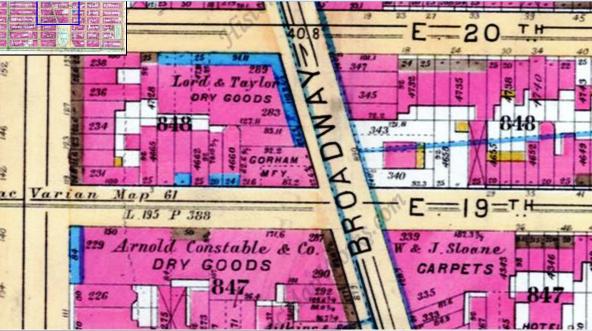
In 1849, Peter’s sister Hannah Green Gerry lost her husband, Naval officer Theodore Russell Gerry. She and her twelve-year-old son, Elbridge, and her nine-year old daughter, Almy, moved from their home at 48 Broadway into the old house at 890 Broadway with their bachelor brother and uncle. Rural life went on as normal, save for during the Draft Riots of 1863, when Eldbridge reportedly ordered the family’s coachmen to pull all the feathers from the peacocks so as not to attract attention.
In the years that followed, particularly after the Civil War, many of the city’s dry goods and specialty merchants relocated to northern Broadway in the area of Union Square. They occupied brand-new buildings that were five and six stories tall with elaborately detailed facades, grand entrances, and large show windows to capture shoppers’ attention. Still, Peter Goelet continued to demonstrate that rural living was possible within a busy metropolis. (Some say he kept the cow and the birds in defiance to the encroachment of uptown improvements.)
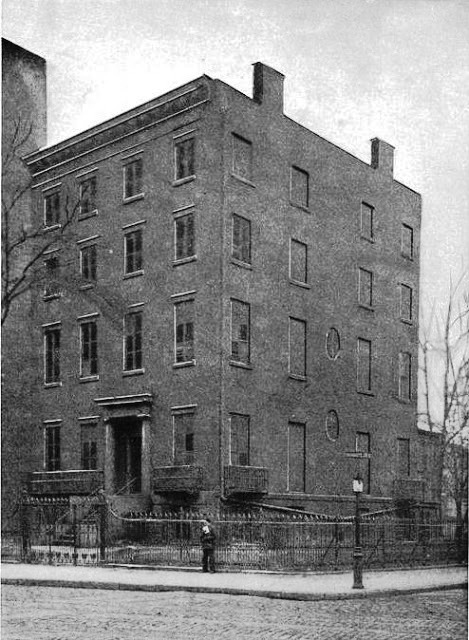
The End of an Era
“[The] once fanciful windows [of the carriage house] are shattered, its ornamented timbers are rotting and crumbling away, and the door on Nineteenth street has not swung on its hinges for a half dozen years or more.” –The Lewiston Daily Sun.
Peter Goelet died in his home on November 21, 1879. Although many of the peacocks and other birds had long disappeared, the cow and the remaining birds were allowed to live out their lives in the yard (the cow was last seen around 1886). Peter also stipulated in his will that the house should not be destroyed for as long as Hannah Gerry lived. The family did not pressure Hannah to leave and she remained on with her two servants.

Hannah passed away at the age of 89 on September 13, 1895. Her daughter, Almy Gallatin, now the wife of Frederick T. Gallatin, inherited the property. By that time, the stone carriage house had fallen into ruin, the iron fence was rusty and all the gates were held fast by rusted padlocks. The window panes in the stable where Peter once kept his horses were broken and the grass where cows and chickens once grazed was gone.
In April 1897, the Peter Goelet mansion was demolished. A year later, in June 1898, plans were filed by Mrs. Gallatin for an eight-story brick structure on the site at 892 Broadway and 27 East 19th Street.
The building’s earliest tenants included Mc Gibbon & Company, Linens and Upholstery, on the first two floors; and dealers in millinery goods, lace curtains, oriental rugs, and a corsets on the upper floors. Since 1986 it has been home to the Lawrence A. Wien Center for Dance and Theater.




Wonderful post! Thank you for your efforts 🙂 Stevan
I am so glad you enjoyed this story — it’s one of my favorites!
[…] 1879: The Last Cow to Graze on Broadway North of Union Square […]
Loved this. Thank you.